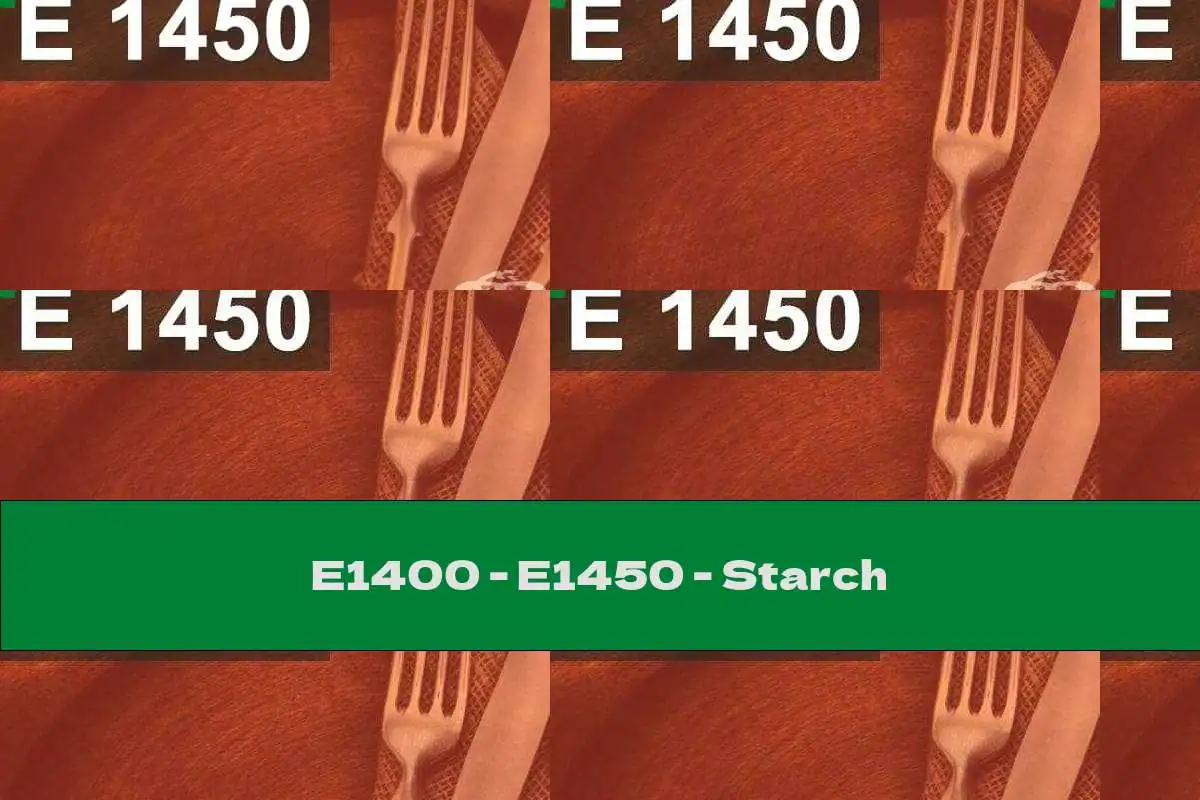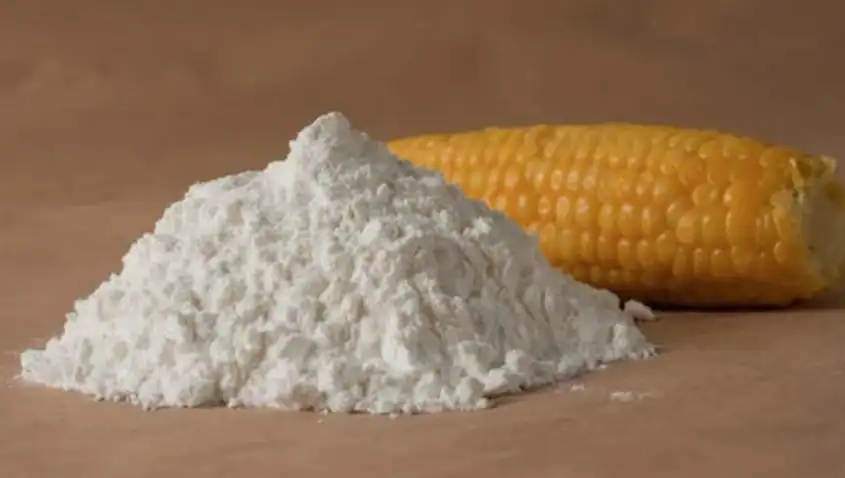What is E1450 Understanding Its Role in Food
E1450, also known as acetylated starch, is a type of modified starch used in many everyday foods. It is made by taking natural starch from sources like maize, potatoes, or tapioca and treating it with acetic anhydride. This process changes the starch structure, making it more stable in heat, acid, or freezing conditions.
You’ll often find E1450 in:
- Sauces and dressings – keeps texture smooth and prevents separation
- Bakery products – improves moisture retention and softness
- Processed meat products – enhances binding and prevents water loss
Its key functional benefits include:
- Thickening – adds body and consistency to foods without affecting flavour
- Stabilising – prevents ingredients from separating during storage
- Texture enhancement – improves mouthfeel and keeps products fresh for longer
E1450 is widely used because it performs well in a variety of food applications and can handle production processes that would otherwise break down regular starch.
Regulatory Status of E1450 Worldwide
E1450 (acetylated starch) is widely approved for use in food by major global regulators. In the UK and the rest of the EU, it’s assessed by the European Food Safety Authority (EFSA), while the US Food and Drug Administration (FDA) and the Joint FAO/WHO Expert Committee on Food Additives (JECFA) oversee safety in other regions. All three bodies consider E1450 safe when used within permitted limits.
Permitted Usage Levels
Rules vary slightly between countries, but in the EU, E1450 can be used in line with Good Manufacturing Practice (GMP). That means manufacturers must only add as much as is needed for its function — whether that’s thickening, stabilising, or improving texture — without exceeding safety allowances.
Labelling Requirements in Germany and the EU
In Germany and across the EU, food labels must clearly list E1450 by its additive code or its name “acetylated starch” in the ingredients list. This applies to packaged goods such as sauces, bakery items, and meat products. This transparency helps consumers who wish to check or avoid certain additives.
Safety Evaluation of E1450 What Does Science Say
E1450, also called acetylated starch, has been reviewed by food safety authorities like EFSA (European Food Safety Authority), FDA, and JECFA. Toxicology studies show it’s generally safe when used within legal limits. Trials on animals and humans haven’t linked it to serious health risks.
How the body handles E1450
Once eaten, modified starch E1450 is broken down much like regular starch – enzymes in the digestive system turn it into glucose, which the body uses for energy. Any unabsorbed starch passes through the gut without harm in healthy individuals.
Side effects and sensitivities
Most people don’t have issues with E1450. However, a few may notice:
- Mild bloating or discomfort if eaten in large amounts
- Rare allergic reactions in those sensitive to corn or potato (depending on its source)
- Issues in people with certain digestive disorders who are advised to limit processed starches
How it compares to other additives
| Additive | Source | Common use | Safety profile |
|---|---|---|---|
| E1450 (acetylated starch) | Modified potato/corn starch | Thickener, stabiliser | Safe at approved levels |
| E1422 (acetylated distarch adipate) | Modified starch | Freeze-thaw stability | Safe at approved levels |
| Native starch | Potato, wheat, corn, rice | Thickening | Safe, but less functional in processing |
E1450 is considered no more risky than other modified starches and is often preferred for its stability and smooth texture in foods.
Expert view
Potential Health Concerns and Myths Around E1450

When it comes to E1450 (acetylated starch), a lot of the worry comes from misunderstanding what it actually is. Like many food additives, it’s often lumped into the “chemicals in food” category, which makes it sound more dangerous than it is. In truth, E1450 is a modified starch made from plant sources – usually maize or potato – and it’s been tested by food safety bodies worldwide.
One of the biggest myths is that E1450 is carcinogenic or toxic to humans. However, there’s no credible scientific evidence to support these claims. Both EFSA (European Food Safety Authority) and JECFA (Joint FAO/WHO Expert Committee on Food Additives) have evaluated E1450 and set safe usage levels. It is digested in a similar way to other starches, with excess simply passing through the gut.
Another common misconception is that E1450 commonly causes digestive issues. For most healthy people, it does not cause stomach problems. Some may experience mild bloating or discomfort if eating large amounts, but this applies to many forms of starch, not just E1450.
When looking at the realistic risks versus exaggerated fears:
- Proven risks: Rare allergic-type reactions or intolerance in sensitive individuals.
- Unproven claims: Links to cancer, severe toxicity, or long-term harm.
- Main takeaway: For the general population, E1450 is considered safe at regulated levels.
Who Should Be Careful with E1450
Most people can eat foods with E1450 modified starch without any issues, but there are a few groups who might want to be more cautious.
People who may need to limit E1450
- Allergy sufferers – While E1450 itself isn’t a common allergen, it can be made from maize, potato, or tapioca starch. Anyone with an allergy to the source material should check the label or ask the manufacturer.
- Those with sensitive digestion – Some people with conditions like irritable bowel syndrome (IBS) or other gut sensitivities may notice bloating, loose stools, or discomfort when eating foods with high levels of modified starch.
- Infants and very young children – There’s no proven harm, but their digestive systems are still developing, so it’s worth limiting unnecessary additives where possible.
- People on strict medical diets – If following a low-additive, low-processed, or clean-label plan for health reasons, you may choose to avoid E1450 altogether.
When to avoid foods with E1450
- If you’ve had a confirmed allergic reaction to modified starches in the past.
- When you’re on a medically advised elimination diet.
- If you’re experiencing ongoing digestive discomfort and suspect additives may play a role – try cutting them out for a short trial period.
Checking ingredient lists for “E1450” or terms such as acetylated starch or modified starch can help you steer clear if you’re trying to avoid it.
How to Identify E1450 in Food Products
Understanding food labels and additive codes
If you’re checking whether a product contains E1450 (acetylated starch), start with the ingredients list. In the UK and across the EU, additives must be clearly labelled either by their E-number or by their full name. You might see it listed as:
- E1450
- Acetylated starch
- Modified starch E1450
- Acetylated distarch adipate
It can appear in many everyday products such as ready-made sauces, soups, baked goods, and processed meats. Packaging may group it with other modified starches, so if you want to be sure, look for these specific terms.
Tips for conscious consumers
If you’re aiming to limit or avoid E1450, here are some quick pointers:
- Read labels every time – recipes can change without notice.
- Check both branded and supermarket own-label products – ingredients differ between lines.
- Opt for ‘clean label’ or additive-free options – often marked as no artificial additives or made without modified starch.
- Choose whole or minimally processed foods – fresh produce, plain meat cuts, and homemade dressings are typically free of E1450.
- Compare products side by side – some brands use natural thickening agents like maize starch, potato starch or tapioca instead.
Being label-savvy makes it easier to manage your intake without cutting out entire food categories.
Alternatives to E1450 for Food Producers and Consumers
If you’d rather avoid E1450 modified starch or want options with a more natural profile, there are a few straightforward swaps used in the UK food industry.
Natural and modified starch alternatives
- Native starches – potato, maize or tapioca starch work well in soups, sauces and bakery products.
- Other modified starches – E1442 (hydroxypropyl distarch phosphate) or E1414 (acetylated distarch phosphate) can give similar thickening and stabilising effects.
- Plant-based thickeners – guar gum, xanthan gum, locust bean gum or pectin are used in gluten-free and vegan products.
- Flours – rice or cornflour can be an easy switch for home cooks.
Each alternative has different heat stability, texture results and cost implications, so choice depends on the product’s recipe and shelf-life needs.
Taichy Food commitment to safe, high-quality ingredients
At Taichy Food, we focus on food additives that are safe, compliant, and fit for UK and EU standards. Ingredients go through strict supplier checks and testing before use.
How Taichy Food ensures additive safety and transparency
- We source from trusted, audited suppliers only.
- All additives meet EFSA and UK Food Standards Agency guidelines.
- Transparent labelling – every additive code (like E1450) appears on packaging.
- Our internal quality control teams test for purity, consistent performance, and compliance.
This approach means producers can meet functional needs in food without compromising on consumer safety or trust.
FAQs About E1450 and Food Safety
What does E1450 do in food
E1450, also known as acetylated starch, is a modified starch used to improve the texture and stability of food. It helps sauces stay smooth, stops fillings from leaking in baked goods, and keeps ready-made meals from going watery when stored or reheated. It’s widely used in products like soups, dressings, bakery items, and processed meats.
Does E1450 cause allergies
Allergic reactions to E1450 are extremely rare. Because it’s made from starch (often maize or potato), most people tolerate it well. However, if you have a starch intolerance or are sensitive to certain food additives, you might want to check ingredient labels and monitor how you feel after eating products containing it.
Can children eat foods with E1450
Yes, in normal amounts found in everyday food, E1450 is considered safe for children under current UK and EU food safety regulations. That said, the same healthy eating advice applies—processed foods with additives, including E1450, should be part of a balanced diet rather than a daily staple. Parents who prefer to limit additives can choose fresh or less-processed options.


